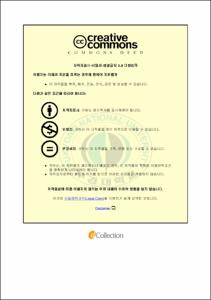Estimation of groundwater recharge rate considering natural and artificial factors at a coastal area in the Busan City
- Alternative Title
- 부산 해안도시 지역에서 자연적ㆍ인위적 요인을 고려한 지하수 함양량 산정
- Abstract
- In this study, the actual evapotranspiration was estimated according to use and climate change in a coastal area, and the relationship between actual evapotranspiration meteorological factors was analyzed. The groundwater recharge was estimated by considering the runoff, water supply?Esewer rate, groundwater use (livelihood, industry, agriculture and others) and subway and electronic cable tunnel outflow rate. Sugyeong River to the east is located and Mt. Kuumryun to the west is bounded. Sugyeong Bay is formed to the south, and Mt. Bae is bounded to the north. The actual evapotranspiration was estimated by using potential evapotranspiration, precipitation and the plant-available water coefficient. Parameters to estimating the potential evapotranspiarion are the mean daily air temperature, dewpoint temperature, atmospheric pressure and mean wind speed. In 2002, the actual evapotranspiration was the highest (554.14 mm/yr), and it was the lowest in 2003 (427.91 mm/yr). The fluctuation of the potential evapotranspiration and actual evapotranspiration was similar. Correlations analysis between the evapotranspiration and the meteorological factors were performed. The correlation coefficient of the actual evapotranspiration and potential evapotranspiration was 0.96, high, but the correlation coefficient of 1) the precipitation and actual evapotranspiration; 2) the precipitation and potential evapotranspiration were very low, respectively. The influence of the potential and actual evapotranspiration and the mean wind speed was higher than others, and the correlation coefficients were 0.73 and 0.67. The evapotranspiration in the coastal urban areas is caused predominantly by wind speed than meteorological factors such as precipitation and temperature. Runoff was 49.80 % of the precipitation because increasing impermeable layer (building, road and so on) according to urbanization. Groundwater usage, leakage of water supply?Esewage, groundwater discharge from subway and electronic cable tunnel were considered to estimate groundwater recharge. Influence for the sustainable development yield came next with the precipitation, runoff and evapotranspiration. It is because precipitation cannot infiltrated into underground in the large areas having w=0 (building, road, others). In order to use, conservation and management of groundwater, they should be considered the exact value of each factor because natural factors (evapotranspiration, baseflow, coastal flow) and artificial factors (runoff, groundwater use, leakage of water supply?Esewage, groundwater discharge from subway and electronic cable tunnel) to estimate accurate values.
- Issued Date
- 2010
- Awarded Date
- 2010. 8
- Type
- Dissertation
- Publisher
- 부경대학교
- Department
- 대학원 환경지질과학과
- Advisor
- Sang Yong Chung
- Table Of Contents
- Ⅰ. Introduction 1
Ⅱ. Study area 5
Ⅲ. Sustainable development yield 9
1. Potential evapotranspiration 10
1.1. Blaney-Criddle Method 10
1.2. Thornthwaite Method 12
1.3. Penman Mothed 14
1.4. FAO Penman-Monteith Method 18
1.5. Comparison of potential evapotranspiration estimation 22
2. Actual evapotranspiration 23
2.1. Correlation analysis 32
3. Runoff 46
3.1. Basic concept 46
3.2. Runoff estimation 55
4. Coastal flow 58
4.1. Basic concept of coastal flow estimation 59
4.1.1. Method using Darcy law 59
4.1.2. Direct measurement 59
4.1.3. Tracer method 59
4.1.4. Acoustic Scintillation Thermography (AST) 60
4.2. Field survey and coastal flow estimation 60
5. Baseflow 62
5.1. Basic concept 62
5.2. Baseflow estimation 63
6. Groundwater recharge 68
6.1. Estimation of groundwater recharge using different method methods 71
6.1.1. Utilization of national water resources statistic data 72
6.1.2. Utilization of loss quantity 73
6.1.3. Utilization of long-term groundwater level data 74
7. Inflow and outflow rates of groundwater from the outside basin 79
7.1. Groundwater use 79
7.2. Leakage of water supplysewage 82
7.3. Groundwater discharge from subway and electronic cable tunnel 82
8. Sustainable development yield 83
Ⅳ. Conclusions 93
References 96
- Degree
- Master
- Files in This Item:
-
-
Download
 Estimation of groundwater recharge rate considering natural and artificial factors at a coastal area.pdf
기타 데이터 / 2.54 MB / Adobe PDF
Estimation of groundwater recharge rate considering natural and artificial factors at a coastal area.pdf
기타 데이터 / 2.54 MB / Adobe PDF
-
Items in Repository are protected by copyright, with all rights reserved, unless otherwise indicated.